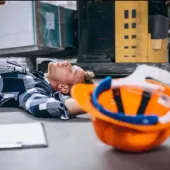Hundreds to be rehomed over RAAC fears
Hundreds of people in Aberdeen are being moved out of their council homes after they were discovered to contain reinforced autoclaved aerated concrete (RAAC).
Thousands of council homes in the city have been checked for the presence of RAAC, with about 500 homes in the Balnagask area of Torry, including 364 council properties, found to be at risk.
Aberdeen City Council said 299 of the 364 council properties were occupied by council tenants, and the remaining 140 properties affected were privately owned. Sixty-four are unoccupied.
Speaking to local media outlets, councillor Miranda Radley, convener of the communities, housing, and public protection committee, said: "This is an incredibly difficult situation for everyone living in a RAAC-affected property, but the council will be doing everything we can to support our tenants during this hugely challenging time.
"These are people's homes and we need to ensure we support our tenants, but also engage with owners and privately rented tenants, to keep them informed on this matter."
The council said it was doing all it could to support tenants with BBC Scotland News reporting it hopes the majority of its tenants will be rehomed by the end of this summer.
In a statement, a spokesperson for the Convention of Scottish Local Authorities (COSLA) said: "We treat the safety of everyone within any council-provided building, house or facility extremely seriously. Scottish local authorities have regular inspections of their buildings estate, put in place mitigations as appropriate and if required close some buildings or move some residents where this is required as we have seen Aberdeen do today."
An independent structural engineers’ report on the presence of RAAC in a representative sample of the properties recommended that council tenants be relocated to alternative accommodation within the city as soon as possible. The council received the report on 22 February, and it was considered by its urgent business committee on 29 February.
Options for the long-term viability of the homes are being explored, including remedial works or demolition, with a detailed appraisal to be presented to city council within six months.
Councillors agreed to set aside an initial £3 million to cover the rehoming programme.
As of December, 2023 The number of social landlord homes across Scotland identified with RAAC was 1,150 and the number under investigation that may have RAAC present was 29,572.
RAAC, which has a lifespan of just 30 years, is a cheaper version of concrete that was used between the 1950s and 1990s.
It is estimated that RAAC has been used in around 4 million non-residential buildings in the UK since the 1950s, and some social housing, although the full extent, and exact numbers are unknown.







